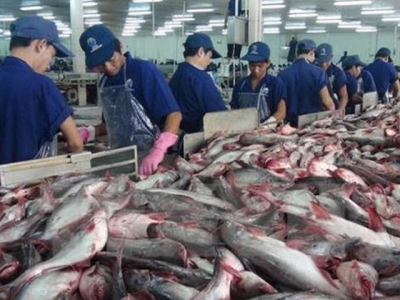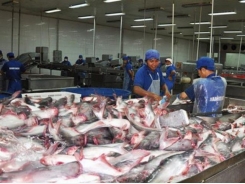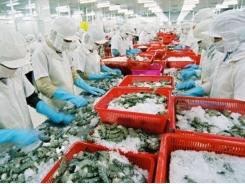Catfish falls in price as Vietnamese master technology, increase productivity

Twenty years ago, Vietnam succeeded in having shark catfish (including tra – or Pangasius hypophthalmus and basa, or Pangasius bocourti) reproduced artificially.
Vietnam's catfish is getting cheaper
As a result, Vietnam began improving its aquaculture, processing and export activities.
The late 20th century was the heyday of American channel catfish (Ictalurus Punctatus). However, the world market restructured as Vietnam’s catfish threatened US catfish farmers.
While Vietnam’s shrimp has to compete with rivals from Asia and South America, its catfish has few competitors because of its high quality and competitive prices.
Research by Vinh Long provincial agriculture department found that spending on material catfish (breeders) accounts for less than 8 percent of total production cost, unchanged for many years.
While Vietnam’s shrimp has to compete with rivals from Asia and South America, its catfish has few competitors because of its high quality and competitive prices.
The expense on chemicals reduced from 5 percent to 4.3 percent and spending on feed from 81 percent to 77.3 percent.
Mastering technology, Vietnam’s catfish productivity has been increasing. A report of the Vietnam Association of Seafood Exporters and Producers (VASEP) showed that in the past, one hectare of water surface could provide 300 tons of catfish, but now, the figure is 500-600 tons.
According to Nguyen Minh Duc from the HCMC Agriculture & Forestry University, in 1998, before Vietnam joined APEC, its catfish exports to the US were modest, about 200 tons.
In 2003, the export volume soared to 20,000 tons thanks to the US trade embargo lifting and the Vietnam-US Bilateral Trade Agreement signing in December 2001.
The high export growth rate was not only attributed to the tariff cut, but also to the rapid increase in catfish supply brought by the successful application of artificial breeding and white-meat fish farming techniques.
The strong rise of Vietnam’s catfish exports has also been empowered by the stable depreciation of the dong against the dollar, which makes exports cheaper and more competitive.
The pressure from protectionism
According to FAO (Food & Agriculture Organization0, American catfish has been farmed since 1960s with farming area increasing from 2,800 to 36,000 hectares in 1990s in the US and productivity from 700 kilograms to 1.8 tons per hectare.
Though productivity has increased, 1.8 tons is low compared with the catfish productivity of hundreds of tons per hectare in Vietnam.
The total output of American catfish was 400,000 tons in 2014. The product is sold in 13 markets in the world. The yearly output in Vietnam is over 1 million on average.
In related news, the US Department of Agriculture’s Food Safety and Inspection Service (FSIS) will inspect Vietnam’s catfish quality control system in the next few months.
Có thể bạn quan tâm
Phần mềm

Phối trộn thức ăn chăn nuôi

Pha dung dịch thủy canh

Định mức cho tôm ăn

Phối trộn phân bón NPK

Xác định tỷ lệ tôm sống

Chuyển đổi đơn vị phân bón

Xác định công suất sục khí

Chuyển đổi đơn vị tôm

Tính diện tích nhà kính

Tính thể tích ao hồ



 Minister urges fisheries development to base on three…
Minister urges fisheries development to base on three…  Export of aquatic products hits US$1.67 billion in…
Export of aquatic products hits US$1.67 billion in…